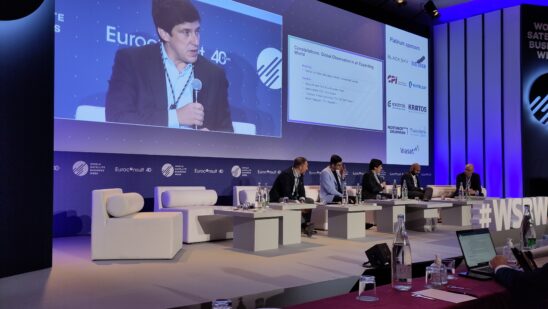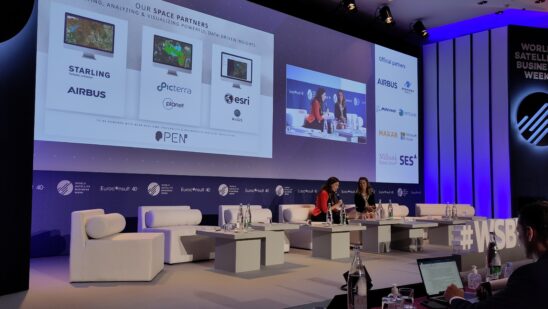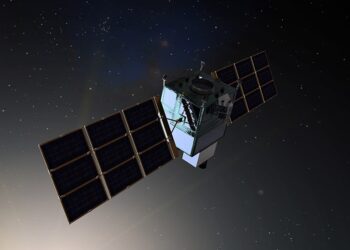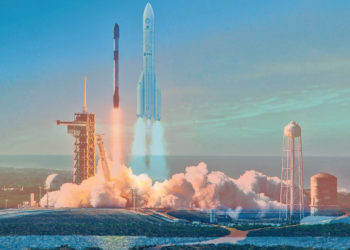Paris panel looks to future of Earth observation
World Satellite Business Week
PARIS — Focus pivoted to satellite Earth observation connectivity and away from broadcast and broadband on the fourth day of Euroconsult’s World Satellite Business Week.

While the majority of the speakers were involved in supplying satellites, data and cloud services, WSBW also brought in Stephanie Babin-Cadenet, global head of ESG strategy at Nestle Nespresso, who wants to implement satellite connectivity to maximize the sustainability and biodiversity of her firm’s agricultural partners worldwide.
“There’s an undeniable opportunity to support agriculture and national infrastructure through Earth observation,” said Nathan de Ruiter, managing director of Euroconsult Canada, as he opened the panel “Constellations: Global Observation in an Expanding World.” “The big question is how the strong capability that’s available can connect to the multitudes of businesses capable of making use of it.”
Business case and cost
De Ruiter’s panel revolved around the uses of Earth observation (EO), and the barriers to growth, which many participants attributed to high cost more than regulatory issues or technological limitations.
“The biggest barrier to the widespread adoption of the use of observation data has been that many potential players have historically been priced out of the market,” said Awais Ahmed, co-founder and chief executive of Bengaluru, India-based space data company Pixxel. “Smaller customers with the potential to build reproducible demand can’t make deals to acquire the output of space-based machines.”
UP42, a global marketplace for purchasing EO data, was briefly mentioned by the panel as a business model capable of resolving this problem. Such a service was also identified as a key to helping potential observation data consumers understand what they would gain from buying it.
“Let’s compare this to the drone market five years ago. Back then, people thought these were going to be small airplanes, not urban delivery robots, filming equipment and consumer electronics for leisure,” said Francisco Vilhena da Cunha, chief executive of Portuguese EO firm Geosat. “The expectations for where the revenue would come from were wrong because the technology was so ubiquitous, it was capable of too much at once.
“Earth observation is a lot like that,” he added. “The market is still deciding what it can economically support at scale.”
Ahmed said observation data prices should be lower, given the need for the industry to grow and attract new business. With the right conditions for growth, the players capable of collecting, analyzing and marketing observation data will be able to upscale and specialize to provide essential products, he said.
”Biodiversity is a particularly interesting business case for Earth observation. Turning it into a reliable business for the long term will take a bit of time, as it’s not economically mature right now,” said Jarkko Antila, CEO of EO firm Kuva Space, based in Espoo, Finland. “There are signs that this is changing though. The European Central Bank has set out a set of financial incentives for companies that can demonstrate they’re doing their bit for biodiversity.”
Antila admitted that greenwashing, the practice of falsifying environmental action, remains a big problem in the world of carbon offsetting and carbon credit systems and that EO is vulnerable to falling foul of such schemes.
“Climate markets remain difficult to monetize,” Vilhena da Cunha said. “That means we often need public money to justify the economics. That said, we need to use this technology to help communities cope with climate change because it’s here and it’s not going away.”
Observation for agriculture
At first, the appearance of a Nespresso executive earned a bemused response from show attendees.

“Nespresso works with 140,000 farmers across the world, which makes for a massive portion of the Earth’s surface devoted to keeping our corporation alive,” Babin-Cadenet said. “As a proud B-corporation, we have a responsibility for the stewardship of that land.”
B-corporations are businesses certified for their social and environmental performance.
Nespresso plans to reach net zero by 2035, a timeline its working to accelerate, while moving away from the use of chemicals in agriculture and relying on the permaculture of native biodiversity to enable coffee crops thrive naturally, both of which it hopes to verify with Earth observation.
“Time is well and truly up on discussion on climate change,” Babin-Cadenet said. “Now we must act, and given the scale and breadth of our operation, Nespresso cannot do that without the space connectivity industry to measure our impact across the world.”
In a presentation, Babin-Cadenet showed photos taken from space that illustrated one Brazil coffee farm’s path toward sustainability. The images documented the switch to agroforestry alley-cropping, which protects the crop from wind and provides the light shade that the plants thrive in, as well as the application of companion planting of native biodiverse plants known to protect the coffee plant from pests and disease, eliminating the need for pesticides.
EO data was able to prove the farm’s ability to sequester carbon and increase biodiversity without affecting its output productivity.
Nespresso made use of images and analytics from Redlands, Calif.-based ESRI’s ArcGIS Earth observation software, San Fransico, Calif.-based Planet’s Picterra solution, and Leiden, Netherlands-based Airbus’ Starling technology.
“It took a bit of work to refine the model of how we worked with this industry, but it’s turned out to be a very successful collaboration,” Babin-Cadenet said. “We’re now looking into expanding our work to farms in India and Columbia, where the local jungle ecology is more complex. In order to keep pace, we’re going to need more help from observation providers, so let’s get to know one another better.
Connectivity Next Summit, taking place Nov. 13-14 in Atlanta, is the essential event for stakeholders in the satellite and space industry. Learn more and register today to take advantage of our early-bird sale and cast your vote on our Innovation Awards.









